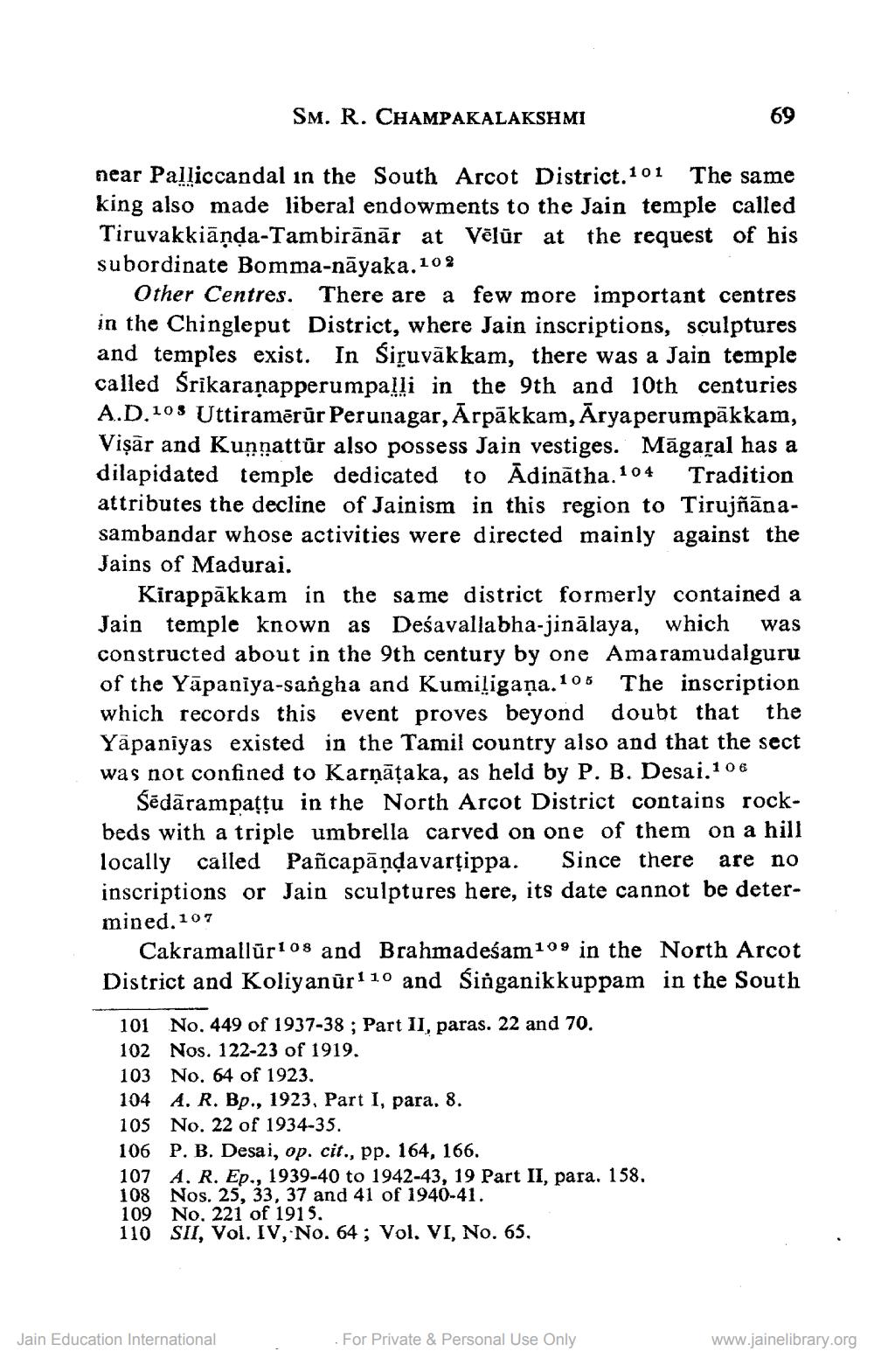________________
SM. R. CHAMPAKALAKSHMI
69
near Palliccandal in the South Arcot District.101 The same king also made liberal endowments to the Jain temple called Tiruvakkiānda-Tambirānār at Vēlār at the request of his subordinate Bomma-nāyaka.102
Other Centres. There are a few more important centres in the Chingleput District, where Jain inscriptions, sculptures and temples exist. In Siruvākkam, there was a Jain temple called Srikaraṇapperumpalli in the 9th and 10th centuries A.D.108 Uttiramērür Perunagar, Ārpākkam, Āryaperumpākkam, Vişār and Kunnattūr also possess Jain vestiges. Māgaral has a dilapidated temple dedicated to Ādinātha. 104 Tradition attributes the decline of Jainism in this region to Tirujñānasambandar whose activities were directed mainly against the Jains of Madurai.
Kirappākkam in the same district formerly contained a Jain temple known as Deśavallabha-jinālaya, which was constructed about in the 9th century by one Amaramudalguru of the Yāpaniya-sangha and Kumiligaņa.105 The inscription which records this event proves beyond doubt that the Yāpaniyas existed in the Tamil country also and that the sect was not confined to Karņāțaka, as held by P. B. Desai.106
Sēdārampațțu in the North Arcot District contains rockbeds with a triple umbrella carved on one of them on a hill locally called Pañcapāņdavartippa. Since there are no inscriptions or Jain sculptures here, its date cannot be determined. 107
Cakramallür108 and Brahmadeśam 109 in the North Arcot District and Koliyanūr110 and Singanikkuppam in the South
101 No. 449 of 1937-38 ; Part II, paras. 22 and 70. 102 Nos. 122-23 of 1919. 103 No. 64 of 1923. 104 A. R. Bp., 1923, Part I, para, 8. 105 No. 22 of 1934-35. 106 P. B. Desai, op. cit., pp. 164, 166. 107 A. R. Ep., 1939-40 to 1942-43, 19 Part II, para. 158. 108 Nos. 25, 33, 37 and 41 of 1940-41. 109 No. 221 of 1915. 110 SII, Vol. IV, No. 64; Vol. VI, No. 65.
Jain Education International
For Private & Personal Use Only
www.jainelibrary.org




